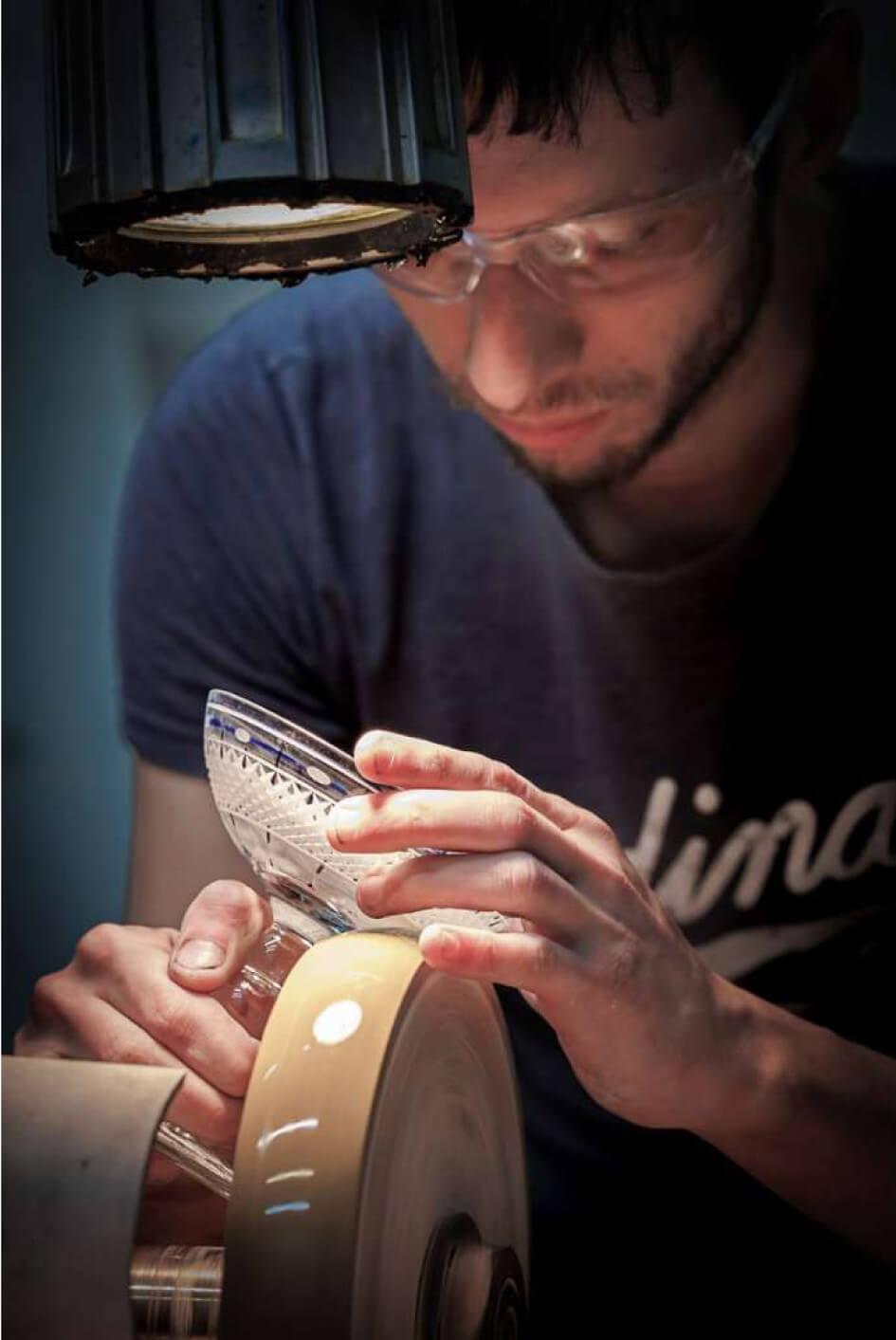PRESS RELEASE: Craft skills remain under threat with 20 new additions to the UK’s Red List of Endangered Crafts
PRESS RELEASE: Craft skills remain under threat with 20 new additions to the UK’s Red List of Endangered Crafts
Reading Time:
1 min {{readingTime}} mins
A stark warning has been issued for the future of traditional craft skills in the UK, as new research by Heritage Crafts has identified 20 more crafts at risk of vanishing from the UK, in the latest major update of its pioneering project – the Red List of Endangered Crafts – published today. The new additions join a list of 165 at-risk crafts now listed in the report.

Heritage Crafts’ research, which has been funded by The Pilgrim Trust with additional sponsorship from The Royal Mint, has found that rising operational costs, a lack of structured training, and mounting market pressures are placing unsustainable strain on crafts that depend on expert hand skills – meaning that without urgent action many of these heritage craft skills could disappear within a generation.
Silver allied trades – which incorporates precious metalworking skills such as lost wax casting, wire drawing, buffing and polishing – is a new entry to the ‘endangered’ category of the Red List. As companies within the historical centres of Birmingham and Sheffield struggle to recruit skilled workers and find their profit margins squeezed by rising costs, it becomes increasingly difficult for the ecosystem of allied trades to continue. Along with other 2 new entries such as rigging and Welsh double cloth weaving, it increases the number of crafts in the endangered category to 93.
Cut crystal glass making, quilting in a frame and rattan furniture making are among 12 new crafts that have been added to the ‘critically endangered’ category of the Red List, meaning that they are at serious risk of dying out in the next generation. They join the list of 70 criticallyendangered crafts, including glove making, which has been reclassified as being in greater danger than when the research was last updated in 2023.
Despite the mounting challenges, the news is not all bleak. Thanks to grassroots efforts, no crafts have become extinct in the UK since 2023, and some have for the first time been assigned ‘resurgent’ status. Promisingly, glassblower Elliot Walker, funded by Heritage Crafts, is working to revive mouth-blown flat glass, a craft thought lost just last year.
Heritage Crafts hails UK ratification of the UNESCO Convention
A major change that has come about since the last edition was published was the announcement that, following years of campaigning by Heritage Crafts and partner organisations, the Government has ratified the 2003 UNESCO Convention on the Safeguarding of Intangible Cultural Heritage (ICH) – one of the last countries in the world to do so.
The Convention ensures that intangible heritage (knowledge, skills and practices) is considered as being of comparable cultural and social value to tangible heritage (buildings, monuments and artefacts) – and similarly worthy of safeguarding. The Government’s consultation on how the Convention should be implemented cited the Red List as an example of good practice, and Heritage Crafts is currently working with the Department for Culture, Media and Sport on implementation of a new UK inventory of ICH.
New ‘resurgent’ status
There is more good news, as, for the first time, the Red List includes a new ‘resurgent’ designation, focusing on those crafts that are faring better, such as hazel basket making, reverse glass sign painting and side saddle making.
In many cases this has been as a result of a new-found appreciation of the handmade and the need to support small businesses during the pandemic. In other cases it has been due to direct support from Heritage Crafts, which since the publication of the last edition of the Red List has distributed 23 more grants to help practitioners overcome the obstacles they are facing, as part of its Endangered Crafts Fund.
Crafts for cultural safeguarding
The Red List also includes another new designation overlaying its existing categories of endangerment. ‘Crafts for cultural safeguarding’ includes skills that might be closely related to other crafts that are practised widely across the UK, but that are endangered in the culturally-distinctive context of a defined community of practice – whether that is geographic, cultural, ethnic or religious. Examples include vernacular thatching and fairground art.
This category also includes crafts that are significant to diaspora and migrant communities, such as the Ukrainian folk arts of petrakivka and pysanky.
Mary Lewis, who led the research on behalf of Heritage Crafts, said:
“As we mark ten years since the launch of the Red List, it is a moment to reflect on how far we’ve come. What began as a bold and ambitious idea has grown into a respected, sector-defining resource. The evolution of our approach is allowing us to embed our Red List work within a broader representation of craft today – from the critically endangered to the resurgent, and from the locally distinctive to the globally connected.”
Sue Bowers, Director of the Pilgrim Trust, said:
“We are delighted to once again support the continuing development of the Red List which is so important in tracking the state of heritage crafts in the UK and creating the platform for discussions about how we can bring about positive change in the future.”
Daniel Carpenter, Executive Director of Heritage Crafts said:
"The Red List underscores the urgent need for greater investment and support to safeguard these skills for the next generation. Reversing this decline would represent not just the continuation of skilled trades, but also a significant boost to the UK's cultural heritage and countless opportunities for future innovation."
The Red List of Endangered Crafts 2025 edition is available to view online at redlist.heritagecrafts.org.uk
There is also an accompanying print publication sponsored by The Royal Mint.
About the Red List of Endangered Crafts
The 2025 edition of the Red List of Endangered Crafts was led by Mary Lewis, Heritage Crafts’ Head of Craft Sustainability, supported by the Pilgrim Trust. The project runs alongside Mary’s work in identifying and developing interventions to improve the prospects of such crafts, funded by National Lottery Heritage Trust, the Swire Charitable Trust and others.
For the 2025 edition, 285 crafts have been assessed to identify those which are at greatest risk of disappearing. Of the 165 crafts featured on the Red List, 72 have been classified as critically endangered and 93 as endangered. The remaining 115 are classed as currently viable. The work is ever-evolving in response to both real-world change and accuracy improvement.
For the purposes of this research, a heritage craft is defined as “a practice which employs manual dexterity and skill at the point of production, an understanding of traditional materials, design and techniques, and which has been practised for two or more successive generations.” The research focuses on craft practices which are taking place in the UK today, including those that have originated elsewhere.
Drawing on information such as the current number of craftspeople and trainees, the average age of practitioners, opportunities to learn, and other issues affecting the future of the crafts, the research assesses how likely it is that the craft skills will be passed on to the next generation. From armour making to woodwind instrument making, each has been assigned to one of four categories: extirpated (locally extinct), critically endangered, endangered or currently viable.
The original 2017 Red List, funded by The Radcliffe Trust and led by Greta Bertram, was the first to rank traditional crafts by the likelihood they would survive the next generation, bringing the plight of these skills to national attention.
New crafts for 2025
New critically endangered crafts Crafts classified as ‘critically endangered’ are those at serious risk of no longer being practised in the UK. They may include crafts with a shrinking 5 base of craftspeople, crafts with limited training opportunities, crafts with low financial viability, or crafts where there is no mechanism to pass on the skills and knowledge.
- Besom broom making (reclassified as more endangered)
- Cut crystal glass making
- Fabric flower making (trade and manufacturing)
- Figurehead carving Glove making (reclassified as more endangered)
- Linen beetling
- Matte painting (filmmaking)
- Pietra dura Quilting (in a frame)
- Rake making (reclassified as more endangered)
- Rattan furniture making
- Thatching (Irish vernacular)
- Thatching (Welsh vernacular)
New endangered crafts
Crafts classified as ‘endangered’ are those which currently have sufficient craftspeople to transmit the craft skills to the next generation, but for which there are serious concerns about their ongoing viability. This may include crafts with a shrinking market share, an ageing demographic or crafts with a declining number of practitioners.
- Armour and helmet making (reclassified as more endangered)
- Flax, hemp and nettle processing
- Hazel basketmaking (reclassified as less endangered)
- Lace making (bobbin lace – reclassified as more endangered)
- Lute making
- Organ building (reclassified as more endangered)
- Petrakivka
- Pewter working (trade and manufacturing)
- Pysanky
- Rigging
- Silver allied trades (trade and manufacturing)
- Sporran making (reclassified as less endangered)
- Welsh double cloth weaving
- Withy pot making (reclassified as less endangered)
About the Endangered Crafts Fund Heritage Crafts’ Endangered Crafts Fund was set up in 2019 to ensure that the most at-risk heritage crafts within the UK are given the support they need to thrive. The Fund is used to support makers and trainees who wish 6 to develop or share their skills in the crafts that have been identified as being most at risk.
To date, 79 projects have been funded with support from the Pilgrim Trust, the Radcliffe Trust, the Sussex Heritage Trust, the William Grant Foundation, the Ashley Family Foundation, the Dulverton Trust, the Garfield Weston Foundation, the Prince of Wales’s Charitable Fund, the Benefact Trust, the Essex Community Foundation, the Ernest Cook Trust and the generous support of individual donors and Heritage Crafts members.
Anyone wishing to donate to the fund may do so securely online via the web link below. Alternatively, please send a cheque made payable to ‘The Heritage Crafts Association’ with an accompanying note specifying ‘Endangered Crafts Fund’ to: Heritage Crafts, 81 North Street, Wellington, Somerset TA21 8NA.
About Heritage Crafts
Founded in 2009, Heritage Crafts is a Charitable Incorporated Organisation (CIO) registered as the ‘Heritage Crafts Association’, the national charity for traditional heritage crafts. Working in partnership with government and key agencies, it provides a focus for craftspeople, groups, societies and guilds, as well as individuals who care about the loss of traditional crafts skills, and works towards a healthy and sustainable framework for the future. Its aim is to support and promote heritage crafts as a fundamental part of our living heritage.
About the Pilgrim Trust
The Pilgrim Trust is an independent grant-making trust that gives around £3 million in grants each year to charities and other public bodies that focus on preserving the UK’s heritage or on bringing about social change. It also funds activities such as research and advocacy that catalyse wider, structural changes.
About The Royal Mint
The Royal Mint’s expertise in precious metals spans over a thousand years. Known as the home of precious metals in the UK, The Royal Mint offer products including gold, silver and platinum commemorative coins, bars for 7 investment, and a digital gold saving option, backed by metal held in their vault.
Source:
Heritage Crafts
Image Credit:
Cumbria Crystal
Author:
Published:









